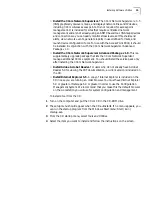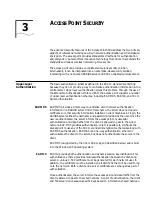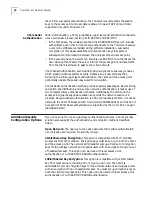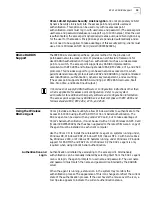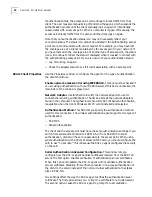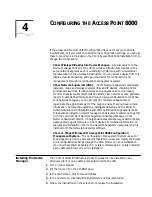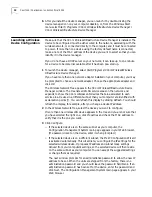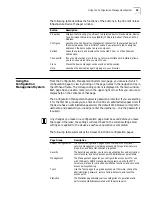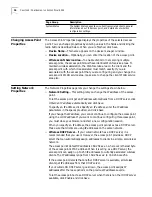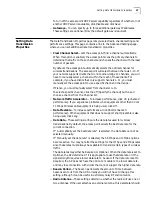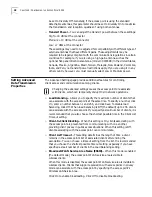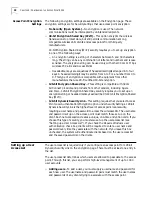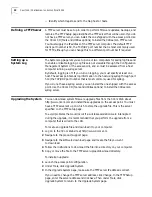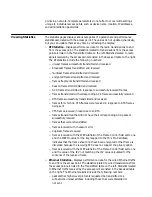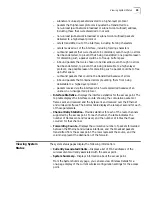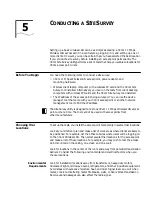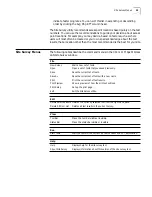
28
C
HAPTER
4: C
ONFIGURING
THE
A
CCESS
P
OINT
8000
be set to Diversity Off. Generally, if the access point is using the standard
detachable antennas, this parameter should be set to Diversity On to maximize
the transmission and reception qualities of using both antennas.
■
Transmit Power
—You can adjust the transmit power between these settings:
High: +18 dBm at the connector
Medium: +13 dBm at the connector
Low: +7 dBm at the connector
These settings may need to be adjusted for compatibility with different types of
external antennas that have different gains. These adjustments may be
required to be legally compliant with the communications regulations in certain
countries. For example, if you are using a high-gain antenna such as the
optional flat-panel directional antenna (model 3CWE498) in the United States,
Canada, Mexico, Argentina, Brazil, Taiwan, Malaysia, New Zealand, Colombia,
India, and Peru, no transmit power restrictions apply. If you are using it in any
other country, however, you must manually select Low or Medium power.
Setting Advanced
Data Transmission
Properties
The Advanced Settings page provides additional features for controlling
client access and communications among clients.
■
Load Balancing
—Allows you to specify the maximum number of clients that
can associate with the access point at the same time. To specify a number, click
On
, enter a number between 1 and 256, and click
Save
. To disable load
balancing, click
Off
. When load balancing is Off (the default) up to 256 clients
can associate with the access point. If you specify a small number of clients, it is
recommended that you also choose the shortest possible time in the Client List
Timeout setting.
■
Client-to-Client Blocking
—When this setting is On, clients associating with
the access point are prevented from communicating with one another,
providing client privacy in public access situations. When this setting is Off,
clients associating with the access point can communicate.
■
Client List Timeout
—This setting determines the length of time a client
remains in the access point’s list of associated clients after ending the
association. You can choose a timeout setting from the list. It is recommended
that you choose the shortest possible timeout setting, especially if you have
specified a small number of clients in the Load Balancing setting.
■
Broadcast WLAN Service Area Name (ESSID)
—When this mode is enabled
(the default mode), the access point WLAN service area is visible to
wireless clients.
When this mode is disabled, the access point WLAN service area is invisible to
wireless clients. Clients that support association with access points in privacy
mode can associate with the access point by specifying the access point’s
Wireless LAN Service Area.
Click O
n
to enable broadcasting. Click
Off
to disable broadcasting.
Changing the advanced settings causes the access point to reassociate
with clients, which can temporarily disrupt their network operations.
Содержание Wireless LAN 11 Mbps
Страница 5: ...Returning Products for Repair 48 REGULATORY COMPLIANCE INFORMATION INDEX...
Страница 6: ......
Страница 10: ......
Страница 22: ......
Страница 28: ......
Страница 42: ...36 CHAPTER 4 CONFIGURING THE ACCESS POINT 8000...
Страница 48: ......


